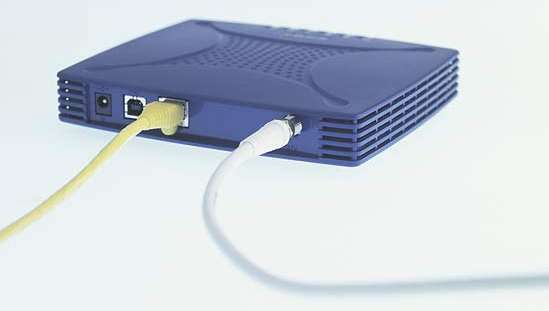Introduction to data communication
what is meant by data communication? Where do we use it? How it is implemented? Data communications serve as an interface between source and receiver with the help of transmission media like wireless cables etc. Data means various sort of information.
Example:
A common example for data communications is a computer connected to internet using a wireless connection to transfer data from various servers.
Data communications through modems is explained below:
Modems:
Modem is a hardware device used to connect computers to internet. Modem is abbreviation for modulator-demodulator. It consists of information in 0’s and 1’s. This device helps to translate these signals to analogue signals that can easily travel. what is meant by data communication?
As name implies, it’s consists of two phases;
- Modulation Phase
- Demodulation Phase
In modulation phase, the modem transmits the translated signals across phone lines which carries information. And in demodulation phase, the modem receives analogue signals from phone line and converts them into digital signals.

The transmission speed for a modem is measured in bits per second (bps). The fastest transmission speed for a modem is 56 kilobits per second. That’s why they are known as 56K modems. In comparison with standard phone lines, data transmissions through 56K modems are more faster. The protocols used in modem enables them to detect errors in the data.
External modems are typically outside the computers. It connects via USB, serial cables etc. And internal modems are those that are already plugged on the computer’s expansion slots. Fax modems transmits or receives data in electronic form from a fax machine or another modem.
For a file to be transferred through computers, both computers should have same file transfer protocols. Most commonly used protocols are Kermit, Xmodem, Ymodem, Zmodem and MNP.
Data communications media:
Most computers have a modem and dial up connections in them that are
too slow. That’s why network cables like cable modem or DSL connections are used because of high speed connections. Internet connections are widely used for communicating and transferring information.
Broadband Connections:
Broadband connections can transmits data faster than typical dial up connections that uses a modem. Broadband technologies are being introduced now. Some connections include ISDN (Integrated services digital network), T1,T3,DSL,ATM and cable modems. For increments in bandwidth, the basic ISDN connection has combination of two 64 Kbps data channels and one 19 Kbps error checking channel. In US, primary rate ISDN provides 24 channels at 64 Kbps each for a total bandwidth increment of 1544 Mbps. This bandwidth level is also called as Fractional T1 service. A T3 line offers 672 channels of 64 Kbps each which sums of 44,736 Mbps. Levels between BRI and PRI are offered as cost remains high.
DSL Technologies:
DSL is abbreviation of digital subscriber line. It is used in homes and is convenient for users at home. Several types of DSL are as follows. They range from 100 Kbps to over 30 Mbps according to their capabilities and rates.
- ADSL (Asymmetrical DSL)
- RADSL (Rate Adaptive DSL)
- HDSL (High Bit Rate DSL)
- IDSL (ISDN DSL)
- SDSL (Symmetric DSL)
- VDSL (Very High Bit Rate DSL)
The performance depends upon the DSL type used. Distance between DSL and Telephone company switch. And various other factors.
Cable Modem Connections:
The technology that helps in connecting the home computers with internet through cable TV connection having higher speeds than dial up connections. Cable modem achieve speeds for download of about 27 Mbps. But they have capability of speeds equal to T1. The limitations for speeds depend on the number of users in local neighborhood using the same connections. A head end facility is used in cable modem connections that originates and communicates cable modem services to subscribers. A head-end has a satellite dish antenna for receiving signals. Amplifiers are used for signals to be strong. The more the distance from head end, the more amplifiers are required.
ATM:
ATM stands for asynchronous transfer mode. ATM is more efficient for sending computer data including audio and video. It’s a network protocol. Which can be implemented on computer LANs and WANs.
Wireless Networks:
Wireless networks are used so that computers can be used anywhere in the range while being connected to a network. Wireless networks uses radio waves for connecting to internet.
Example:
Satellite communications networks and mobile phone networks are examples of wireless networks.
Four main types of wireless networks are as follows:
-
LAN (Wireless Local Area Network):
Links various devices using a wireless distribution methods.
-
MAN (Wireless Metropolitan Area Networks):
It helps connecting several wireless LANs.
-
WAN (Wireless Wide Area Network):
This network covers large areas including a lot of other networks.
-
PAN (Wireless Personal Area Network):
This type of wireless covers short distance generally within a person’s reach.
Also read here
https://eevibes.com/computing/introduction-to-computing/how-many-types-of-memory-cards-are-there/
One thought on “what is meant by data communication?”